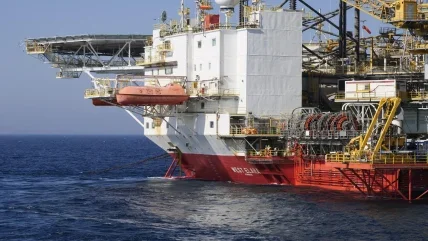
Australian energy company Santos has delayed critical decisions for the Dorado Phase 1 liquids development project located offshore Western Australia.
Santos has opted not to proceed with acquiring a floating production storage and offloading (FPSO) vessel or entering the front-end engineering and design (FEED) phase at this time.
This decision has deferred the final investment decision (FID), previously targeted for 2025.
The Dorado joint venture comprises Santos with an operating stake of 80%, Carnarvon Energy (10%), and CPC’s subsidiary OPIC Australia (10%).
The partnership is reviewing the project timeline, with updates expected from Carnarvon Energy as the reassessment progresses.
The Dorado project has been in development for several years. In 2021, Santos awarded a FEED contract for the wellhead platform (WHP) to Malaysian oil and gas service provider Sapura Energy.
The FEED contract involved the design, construction, and installation of an unmanned installation located in 90m of water above the Dorado oil and gas field. The asset is located within the WA-437-P permit in the Bedout sub-basin.
The wellhead platform was planned to host development wells and gas reinjection wells with minimal processing facilities, operated remotely from an FPSO facility located approximately 2km away.
The Dorado project was designed as an integrated oil and gas development to be executed in two phases. The initial phase would focus on producing oil and condensate through the WHP and FPSO, with gas reinjection planned to enhance oil and condensate recovery.
A subsequent phase would involve gas production to support Santos’s domestic gas infrastructure in Western Australia. Initial gross liquids production was projected to range between 75,000 and 100,000 barrels per day.
In July 2024, Carnarvon Energy noted that the JV was making progress in optimising the project’s economics. Measures included reducing the sizing of the FPSO, WHP, and associated facilities, as well as phasing the timing of wells.
These steps disclosed by Carnarvon Energy were expected to lower upfront capital expenditure (CAPEX), with any remaining wells to be drilled during production and funded through project cash flows.
The JV also explored redeployment options for existing FPSO vessels or conversion of donor hulls to achieve additional cost savings and reduce time to first oil. Carnarvon Energy estimated that these optimisations would bring the overall capital expenditure (Capex) prior to first oil below the previously guided figure of approximately $2bn.
Carnarvon Energy, supported by a strong balance sheet, a $90m development cost carry, and potential for a debt facility, expressed confidence in funding its share of development costs.
Carnarvon Energy CEO Philip Huizenga said: “Given the quality of the Dorado project, we at Carnarvon are disappointed by this latest deferral to the project. Carnarvon is fully supportive of the Joint Venture’s desires to realise value for the asset and will support any initiatives for drilling as soon as possible.”






